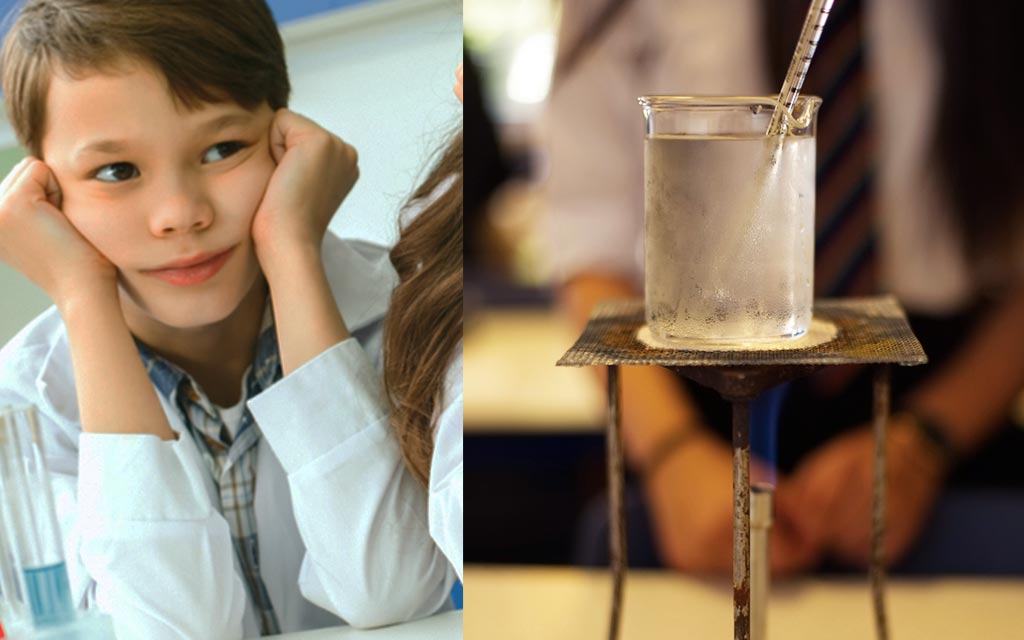
FRANKIE DeGROOT | News | CONTACT
Science classes at Betoota High hit a new low yesterday when students were asked to boil a beaker of water and plot the temperature on a chart, marking the third time they have performed a variant of the same experiment in the past month.
“This is bullshit” said Year 7 student David Tubbergh.
“All the good experiments are banned because of a few stupid kids, and the only chemicals the school can afford are water, sodium chloride and copper sulphate.”
However, science teacher Steve Punch says measuring changes in water temperature is a critical part of understanding the conversion of energy to heat as well as the conversion of boring numbers into an interesting graph.
“At some stage in your lives, you will need to turn cold water into hot water” he announced, whilst displaying a beaker of water to the class, so they didn’t have to imagine what a beaker of water looks like.
“Whether you are turning on the electric kettle to make a cup of coffee, or putting a mug of water into the microwave to make a cup of coffee, changing the temperature of water is a very useful skill that you will use many times in the future, especially if you become a barista or moonshiner.”
“When I chose Chemistry as an elective I thought we would be doing something like they do in school science labs on TV” said student Leonie Bessel.
“You know, different-coloured chemicals in complicated glassware, and if you mix the wrong chemicals together they blow up. Maybe that happens at Betoota Grammar, but here we just seem to be focusing on water-based temperature experiments”.
This observation was rejected by Mr. Punch, or, as his students call him, ‘Mr. Punch’.
“Last week’s experiment, ‘Conversion Of Energy To Heat Of H20 And Plotting The Results On A Line Graph’ is totally different to yesterday’s experiment of ‘Measuring Heat Gain Of Dihydrogen Monoxide And Recording Results On A Bar Chart’.”
“There are a few similarities though.”
“Maybe I’ll bring in some food colouring for next week’s experiment, ‘Recording Temperature Change Of An Aqueous Solution On a Spreadsheet’, just to spice it up a bit”.










